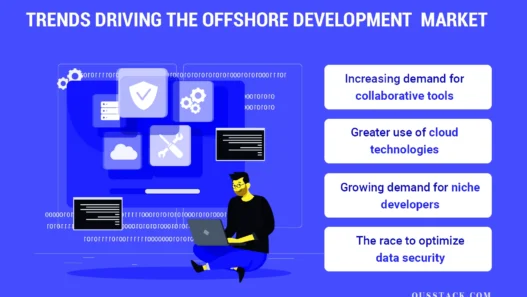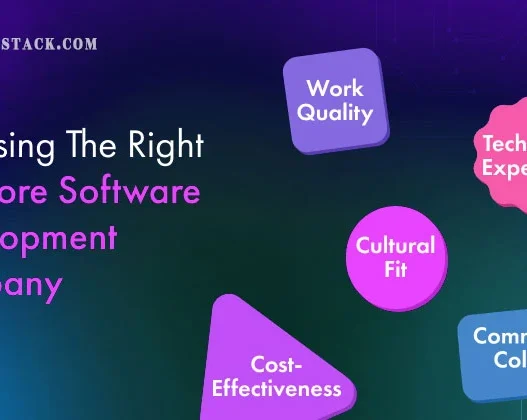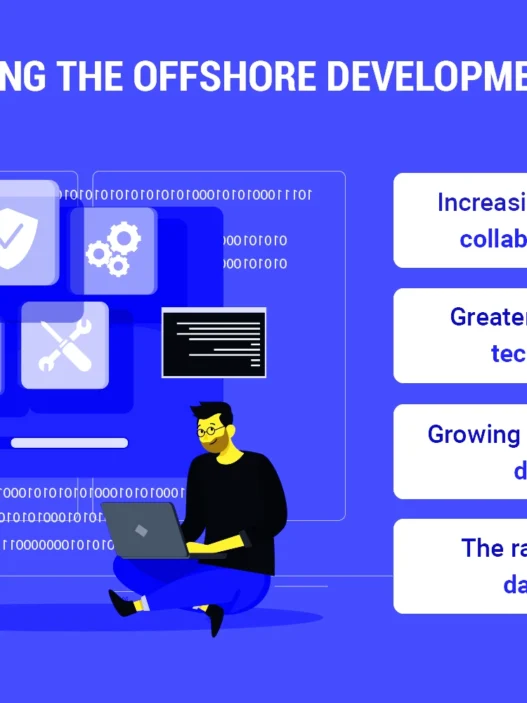In today’s competitive business landscape, organizations must decide whether to build an in-house development team or partner with an offshore development provider(The Ultimate Guide to Offshore Software Development in 2025), a choice that significantly impacts costs, project timelines, product quality, and long-term sustainability. This analysis explores the true costs and benefits of both approaches, helping businesses make informed decisions in 2025.
Table of Contents
The True Cost Structure of In-House Development
Many organizations focus solely on salaries when calculating the cost of an in-house development team, but the actual expense extends far beyond base compensation. Direct costs include compensation packages that consist of base salaries ranging from $80,000 to $180,000 annually, with benefits adding another 20-30% and performance-based incentives increasing total compensation by 10-25%. Recruitment and onboarding expenses involve agency fees of 15-25% of the first-year salary, job posting costs of $500-$1,500 per position, and engineering time spent on interviews, typically 15-20 hours per hire.
Onboarding inefficiencies reduce productivity for the first 3-6 months, with new hires achieving only 60-70% productivity. Infrastructure and tools such as hardware ($2,000-$5,000 per developer), software licenses ($1,000-$3,000 annually per developer), and office space ($10,000-$15,000 per employee in major tech hubs) add to the financial burden.
Indirect costs include management overhead, where engineering managers oversee 5-8 developers with salaries between $150,000 and $220,000, along with HR and administrative support expenses. Employee turnover is another major cost, with an average tenure of 2-3 years in tech companies and replacement costs reaching 150-200% of the annual salary due to lost productivity and recruitment efforts. Scaling challenges arise, with hiring senior developers taking an average of 3-6 months and downsizing posing risks to team morale and company reputation.
The Complete Cost Structure of Offshore Development
Offshore development presents a different cost model with its own unique considerations As explored in our (comprehensive guide to offshore software development). Direct costs include service fees that vary by region: Eastern Europe ($40-$65 per hour), India and Pakistan ($25-$50 per hour), Southeast Asia ($30-$55 per hour), and Latin America ($35-$60 per hour). Contract management costs arise from legal fees for international contract development and review, along with payment processing fees of 1-3% for international transfers. Communication infrastructure expenses include collaboration tools, subscriptions, and potential costs for translation services or language training.
Indirect costs involve management overhead, requiring an internal project manager or liaison dedicated to offshore team coordination, additional documentation, and regular travel for face-to-face meetings, typically occurring quarterly. Quality assurance measures necessitate additional QA resources, increased code review efforts, and integration time from in-house senior developers. Knowledge transfer and training incur initial reduced productivity during ramp-up (typically 1-3 months), documentation development costs, and training sessions across time zones.
ROI Comparison: Real-World Scenarios
Scenario 1: Early-Stage Startup Building MVP
- Project Parameters: 6-month development timeline, need for 4 developers, limited funding
- In-House Approach:
- Total Cost: ~$500,000
- Time to Assemble Team: 2-3 months
- Total Time to Market: 8-9 months
- Offshore Approach:
- Total Cost: ~$230,000
- Time to Assemble Team: 2-4 weeks
- Total Time to Market: 6-7 months
- ROI Analysis: Offshore development offers approximately 54% cost savings and a 2-3 month faster time to market, crucial for securing funding and market validation.
Scenario 2: Enterprise Adding New Product Line
- Project Parameters: 12-month development timeline, need for 10 developers, integration with existing systems
- In-House Approach:
- Total Cost: ~$2.1 million
- Knowledge Retention: High
- System Integration Efficiency: High
- Offshore Approach:
- Total Cost: ~$1.2 million
- Knowledge Retention: Medium to Low
- System Integration Efficiency: Medium
- ROI Analysis: Offshore development offers 43% cost savings, but enterprises must consider integration and knowledge transfer challenges, reducing true ROI to 20-30%.
Scenario 3: Maintenance and Incremental Development
- Project Parameters: Ongoing development, fluctuating resource needs (3-8 developers), 24-month timeline
- In-House Approach:
- Total Cost: ~$3.2 million
- Scaling Challenges: High
- Continuity: Medium (affected by turnover)
- Offshore Approach:
- Total Cost: ~$1.7 million
- Scaling Flexibility: High
- Continuity: Medium to Low
- ROI Analysis: Offshore development offers 47% cost savings and improved scaling flexibility, though knowledge continuity concerns reduce net advantages to 30-40%.
Hidden Factors That Impact True ROI
Intellectual property protection is stronger with in-house teams due to direct employment relationships and local legal frameworks, whereas offshore arrangements require careful contracts and may involve additional legal costs. Time-to-market considerations highlight that in-house recruitment delays project initiation by 3-6 months, whereas offshore teams can start within weeks, potentially generating additional revenue. Quality and technical debt are generally lower in in-house teams with proper management, while offshore teams may require extra maintenance, adding 15-30% to long-term costs. Team cohesion and communication are easier with in-house teams due to direct interactions, whereas offshore teams may face cultural and time zone challenges, reducing efficiency by 10-20%.
Hybrid Models: The Best of Both Worlds?
Many organizations adopt hybrid models to balance cost savings and quality. The core-and-spoke model keeps in-house teams responsible for architecture and critical components, while offshore teams execute well-defined features, achieving 30-40% cost savings. The follow-the-sun development model distributes teams across multiple time zones, enabling 24-hour development cycles and accelerating project timelines by 30-40%.
Decision Framework: Making the Right Choice for Your Business
To determine the optimal approach for your specific situation, consider the following decision matrix:
Choose In-House Development When:
- Long-term product development is anticipated (5+ years)
- Deep integration with existing systems and teams is required
- Strong IP protection concerns exist
- Culture and collaboration are central to your development philosophy
- Budget allows for higher upfront and ongoing costs
Choose Offshore Development When:
- Speed to market is critical
- Budget constraints are significant
- Project scope is well-defined and modular
- Specialized skills are needed that are difficult to recruit locally
- Flexible scaling of resources is important
Choose a Hybrid Model When:
- Core IP and architecture should remain in-house
- Cost efficiency is important but not at the expense of quality
- Project includes both critical and standard components
- Team scalability needs vary throughout the development lifecycle
Conclusion: Beyond Cost Considerations
While cost savings often drive initial interest in offshore development, the most successful implementations focus on strategic advantage rather than pure cost reduction. The right approach depends on your specific business context, project requirements, and long-term objectives.
In 2025’s increasingly remote-friendly work environment, the lines between in-house and offshore development continue to blur. Organizations that can effectively leverage global talent pools while maintaining strong communication, clear expectations, and consistent quality control will gain significant competitive advantages regardless of which model they choose.
Before making your decision, conduct a thorough analysis of both tangible costs and intangible factors specific to your organization’s situation, culture, and goals For additional insights on selecting the right offshore development partner, refer to our (complete offshore development guide). The right choice will align not just with your budget but with your broader business strategy and values.
Have you experienced both in-house and offshore development? Share your experiences in the comments below or contact us to discuss which approach might work best for your specific situation.














I\’m so glad I found your site. Your posts are consistently excellent.
I\’m truly grateful for your support. Your positive feedback keeps me motivated.
Your content is a go-to source for me when I need information. Great work, as always!
Your dedication to providing quality content is truly admirable. I\’m a fan of your work.